Reese’s Piece #1: Peanut Butter Eggs
For those who celebrate it, Happy Easter! By now I hope you’ve had your fill of food and family and church (if that’s your thing) are eagerly anticipating tomorrow when all the candy at CVS is 75% off.
Now, I am not a huge candy person. When dinner is over, I’d trade dessert for a nice cheese course any day of the week. But if you follow me on Twitter, you may be aware that I do have one singular candy weakness, and that is seasonal Reese’s products:
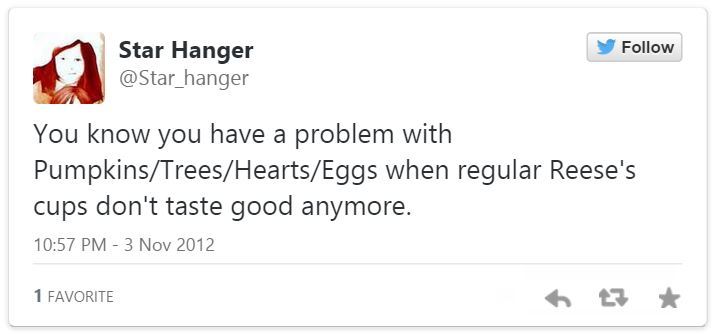



The beauty of seasonal Reese’s products is that select seasonal Reese’s products have a far superior chocolate-to-peanut butter ratio than your standard everyday Reese’s cup. They literally have SO. MUCH. PEANUT BUTTER. If (1) you can ignore the fact that said “peanut butter” is really a 1:1 peanut butter:sugar paste, and (2) you are far enough down the paleo/low carb rabbit hole that you worship at the altar of all things nut butter, you can basically delude yourself into believing some very insane things, things like “seasonal Reese’s products are the One True Paleo Dessert Food,” and “for a candy, hey, seasonal Reese’s products are a great source of protein and when you think about it, relatively low in carbs, too!” (Don’t worry, I’m all better now).
So yeah, it has been well-documented by candy enthusiasts far more devoted than myself that the Peanut Butter Pumpkins, Trees, Hearts and Eggs are the four pillars of candy greatness to which all other candies aspire to emulate but can never achieve. I say selectseasonal Reese’s products for a reason. Around the holidays the candy market also gets saturated with “miniature” and “snack size” versions of these items with either similar or often WORSE chocolate-to-peanut butter ratios, and let me tell you that buying a bag of the wrong kind of seasonal Reese’s product can just about ruin your day.
It is a vertiable minefield out there, and I am here to guide you.
This is the first in a series of Reese’s pieces in which I will walk you through all of the products in the Reese’s portfolio and let you know the precise(ish) chocolate-to-peanut butter (C:PB) ratios so that you can make an informed decision as a consumer.
We are starting with Easter.

Now as you can see, Reese’s actually offers many Easter-themed products but we are going to ignore miniature cups, Reese’s Pieces, and bunny-shaped itesm, and focus on what’s really important: the eggs. Another note is that I inspected closely, and the “king sized” eggs were merely two regular eggs packaged together, so that item was not purchased.

My wife and I hit up a couple of drug stores and I’m proud to say we were able to hunt down every egg product, and thanks to a nifty plastic egg assortment, we were able to keep costs down to boot! Win-win. Here is what it contained:
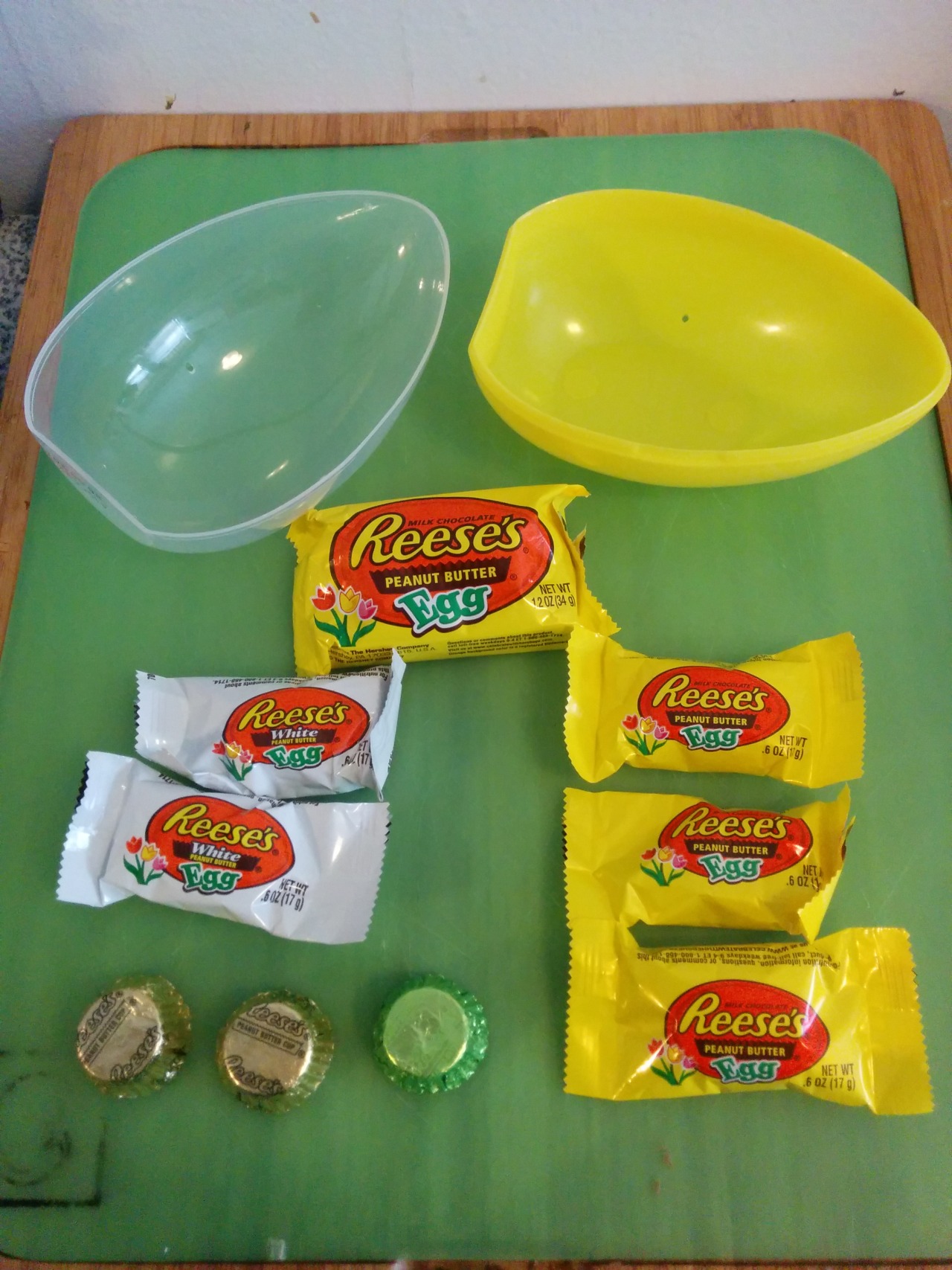
So let’s get the tools together and dissect these things.

Item #1: The Regular Peanut Butter Egg
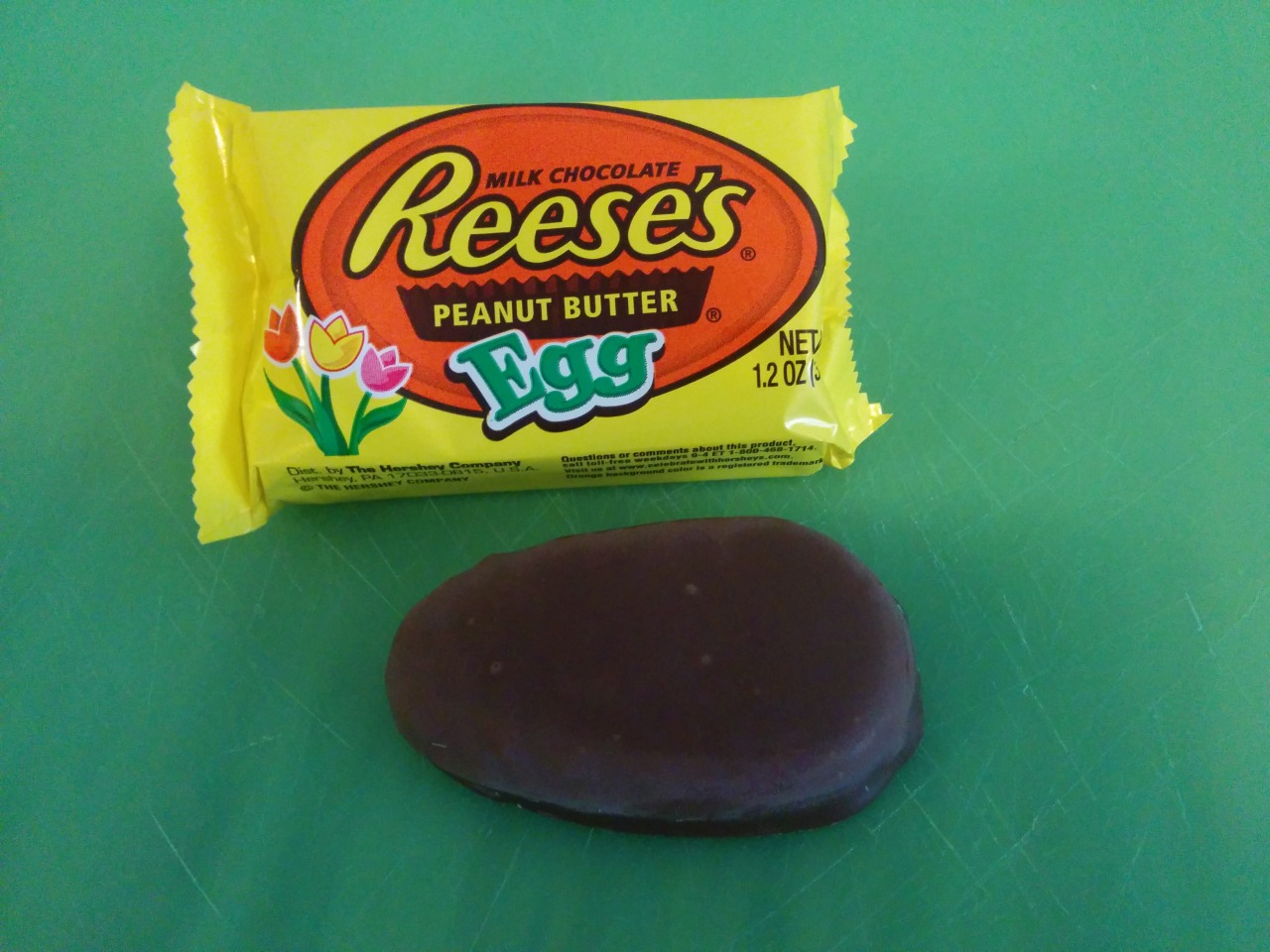
Look at it. Isn’t it glorious? Let’s get a view of a cross-section:
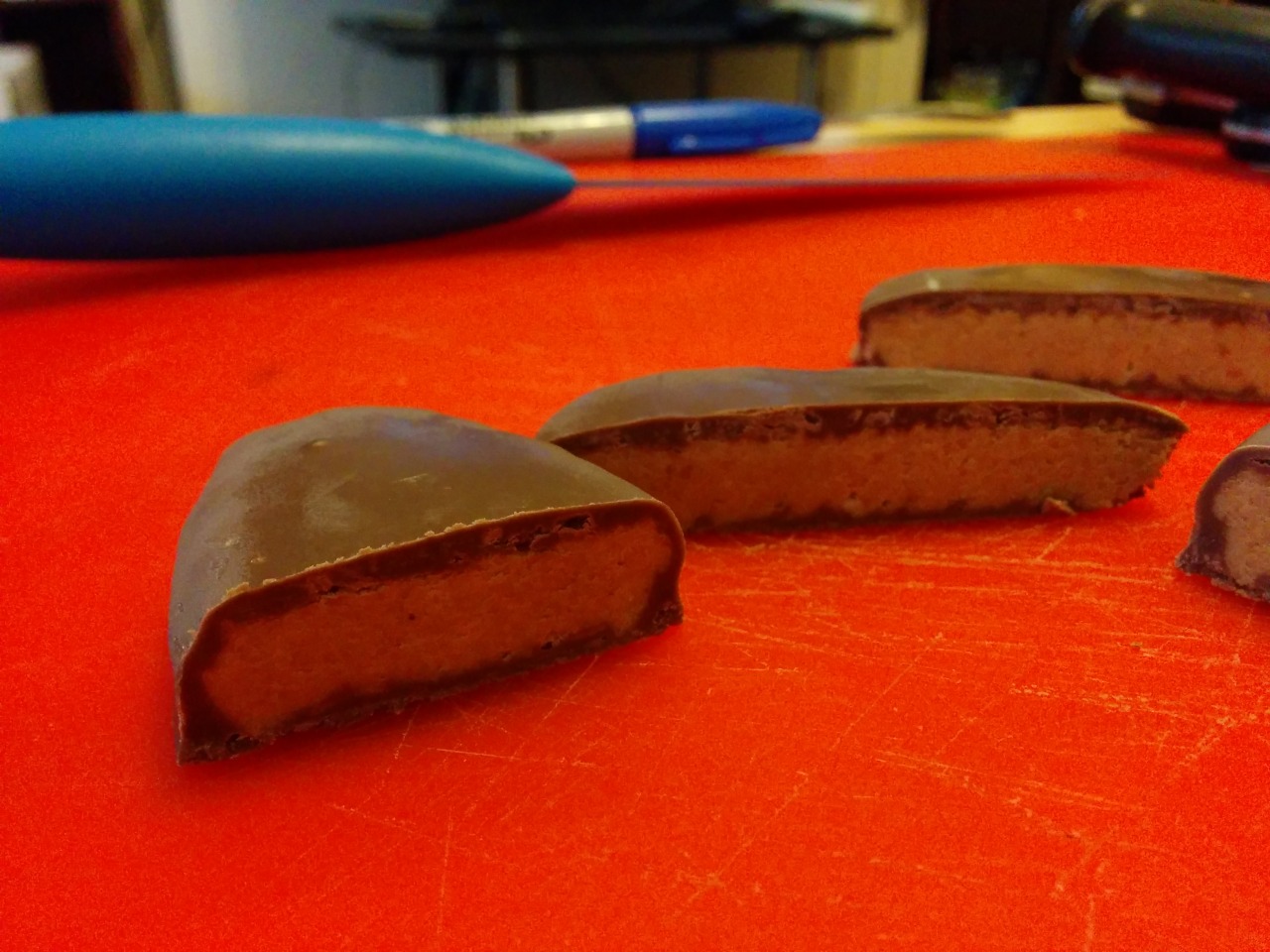
The Regular Peanut Butter Egg is a classic. I believe that in the end, the Peanut Butter Egg will prevail with the lowest C:PB ratio, because unlike the Pumpkin, Tree, and Heart, it should have the lowest surface-to-volume ratio; there are no silly nooks and crannies for extra chocolate to get caught in. It’s sleek, simple, and sexy.
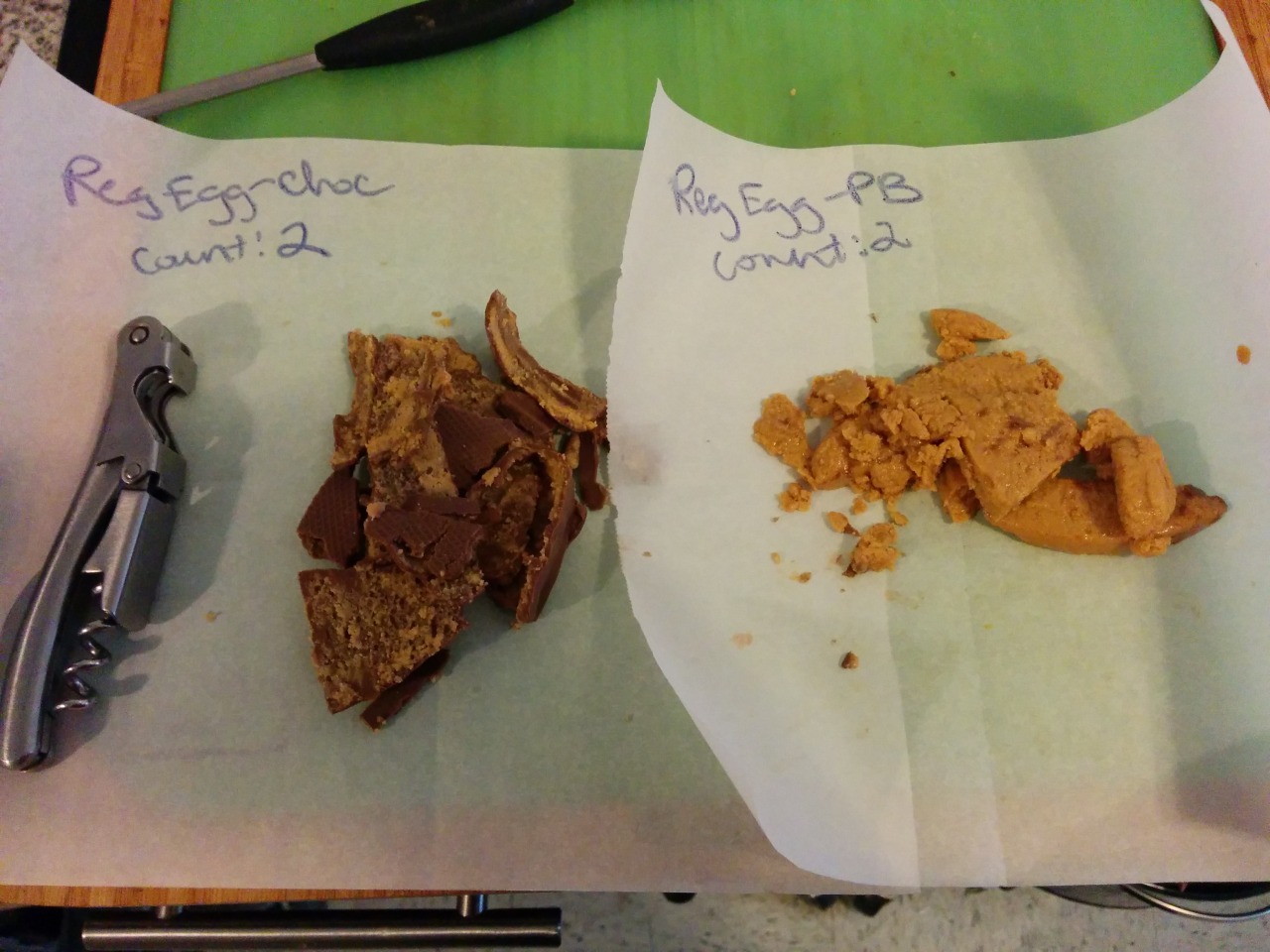
Upon dissection, two regular eggs gave 39 g of chocolate and 34 g of peanut butter, for a final C:PB ratio of 1.15:1
Item #2: The Snack-Sized Peanut Butter Egg
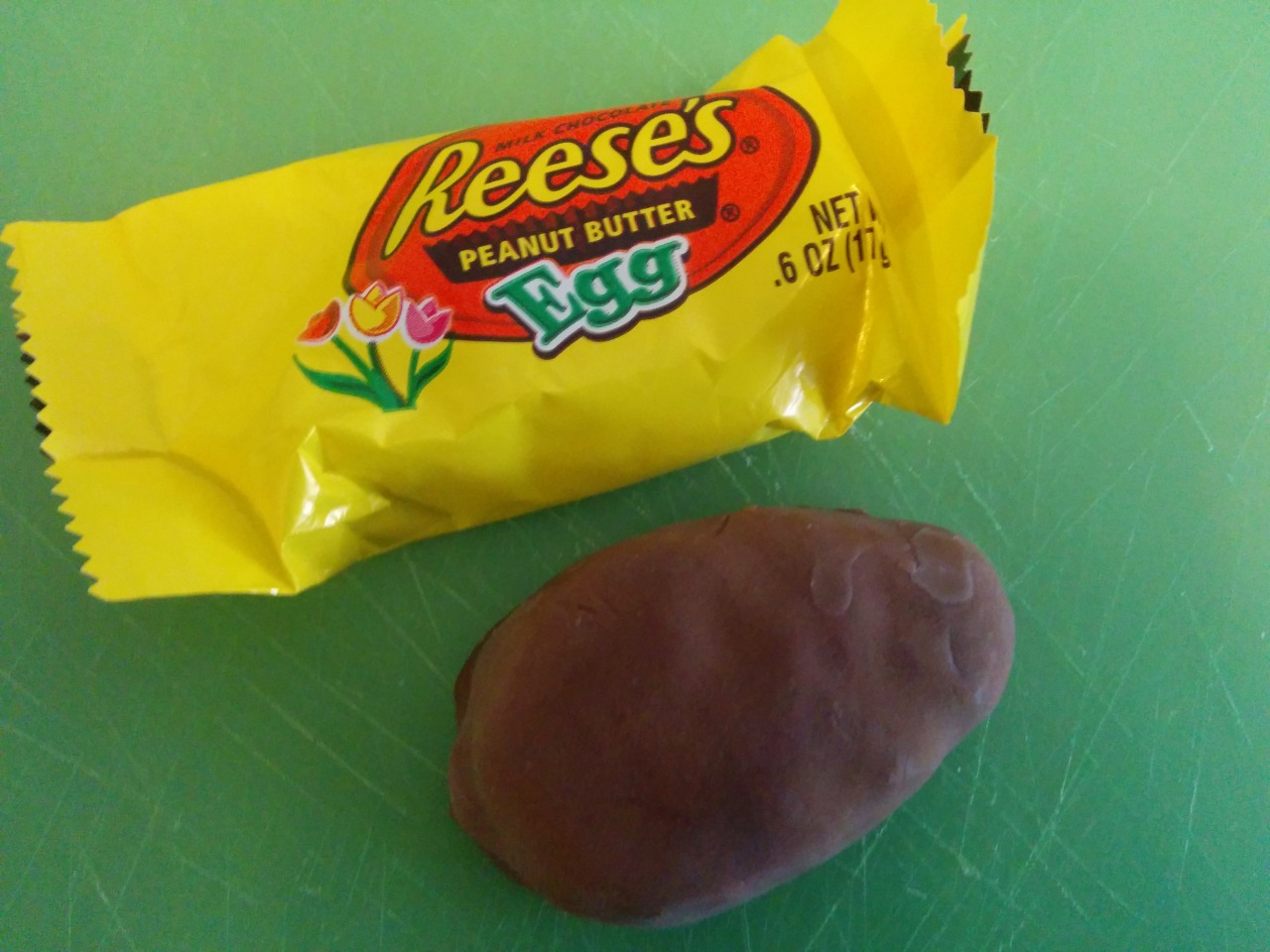
The snack-sized egg is actually also a favorite around my household because the serving size is a bit smaller, and it makes it a bit easier to pace yourself. The regular egg, while delicious, is also a major commitment. And in cases when one is not quite enough, two are way too much. Two are always way too much. With the snack sized egg, reaching the perfect peanut butter cup serving size is easily attainable. Here is a size comparison:

The C:PB ratio FEELS similar to the regular egg….but is it?
A cross-section:
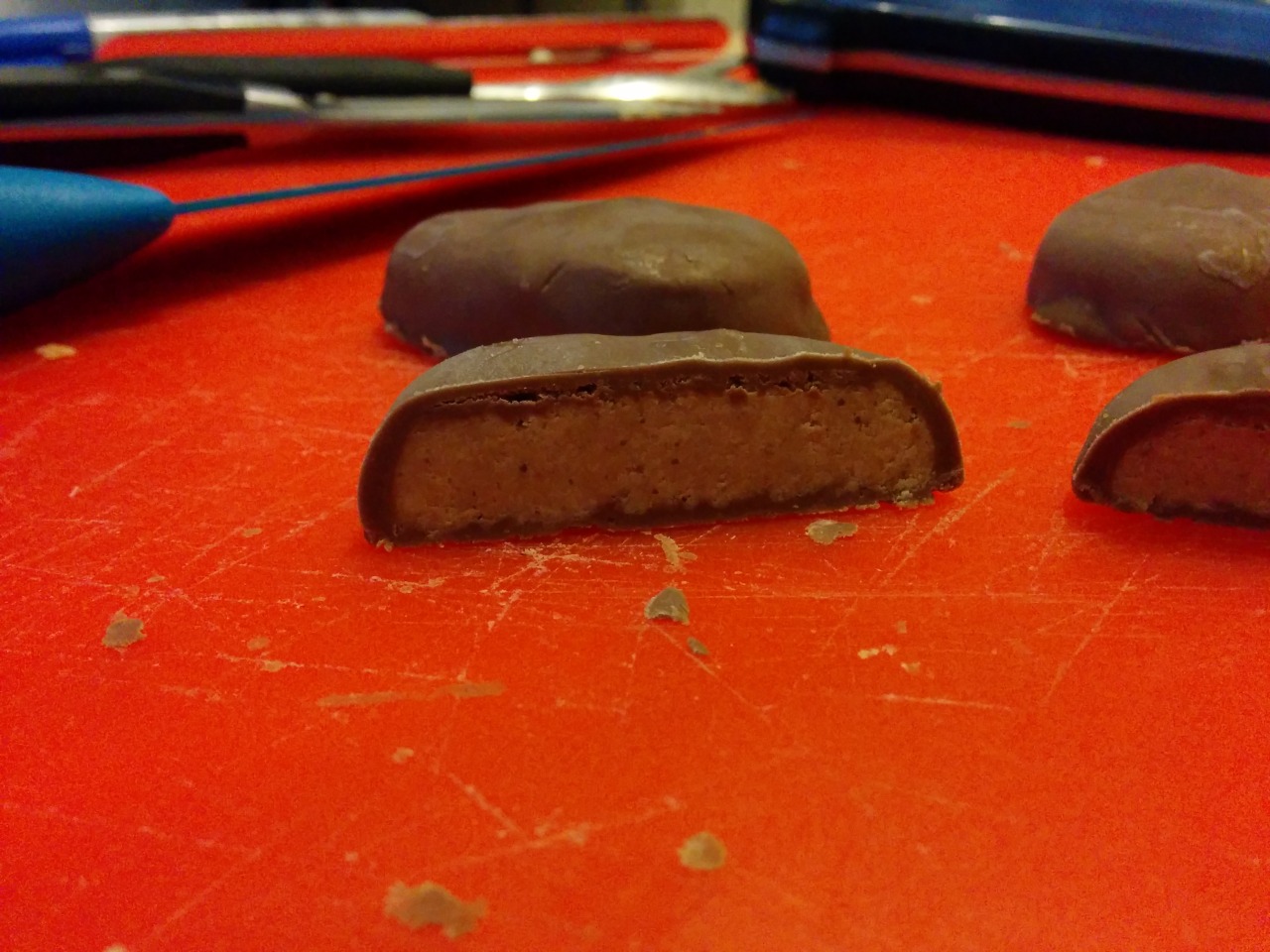
Three snack-sized cups afforded 29 g of chocolate and 23 g of peanut butter for a C:PB ratio of 1.26:1

Item #3: The Giant Peanut Butter Egg
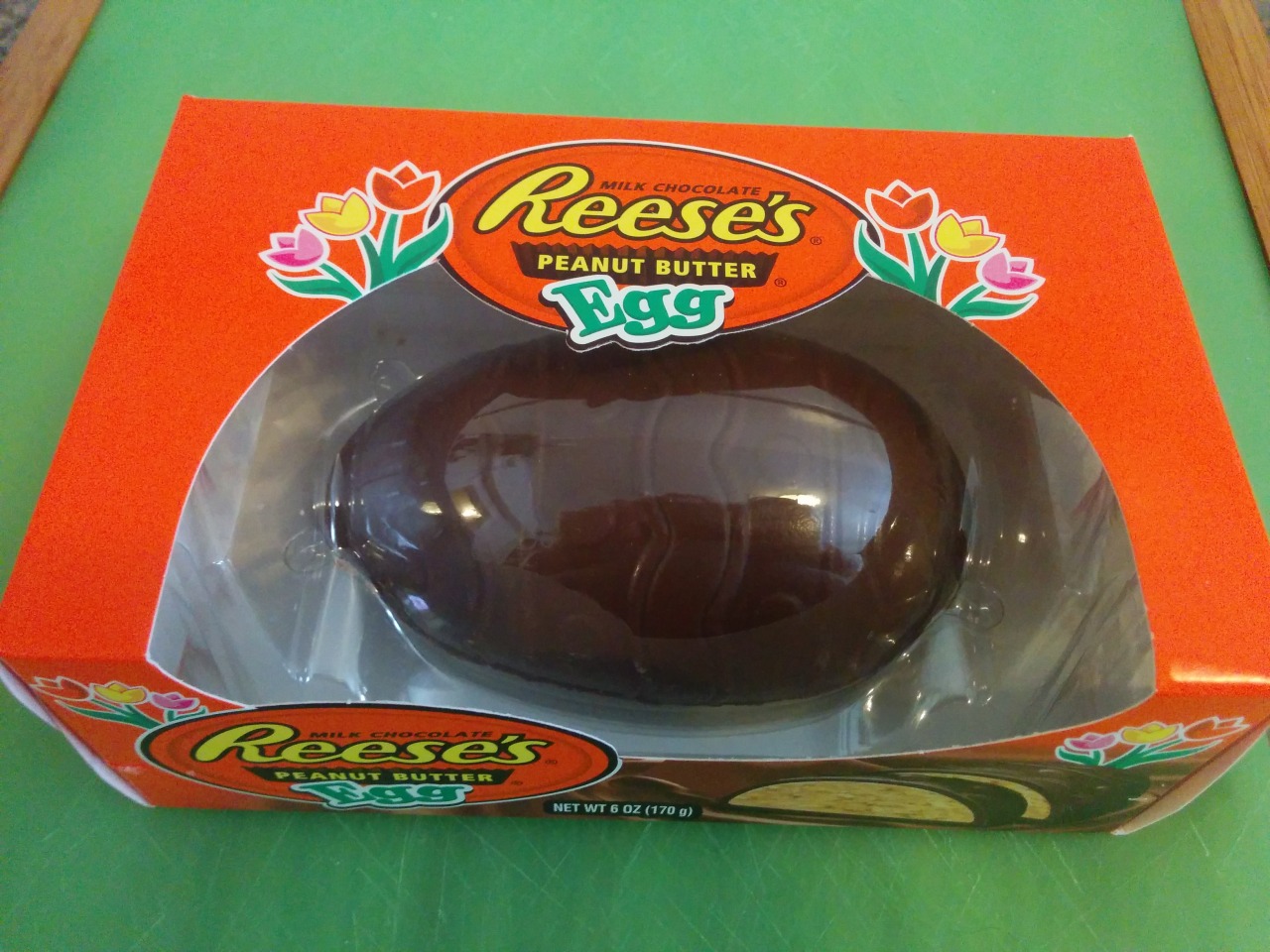
Admit it, every time you see this you want to buy it. But you don’t, and here are two reasons why: (1) You don’t want diabetes. (2) These things are so dangerous. You have NO IDEA what the insides might hold. You are a skeptical consumer, and you know that Big Candy are bastard money-grubbers at this time of year, and that that egg could have >1 cm thick chocolate walls and hold about the same piddly amount of peanut butter as a single peanut butter cup.
Well, I am happy to report that this is not the case! Just look at this baby:
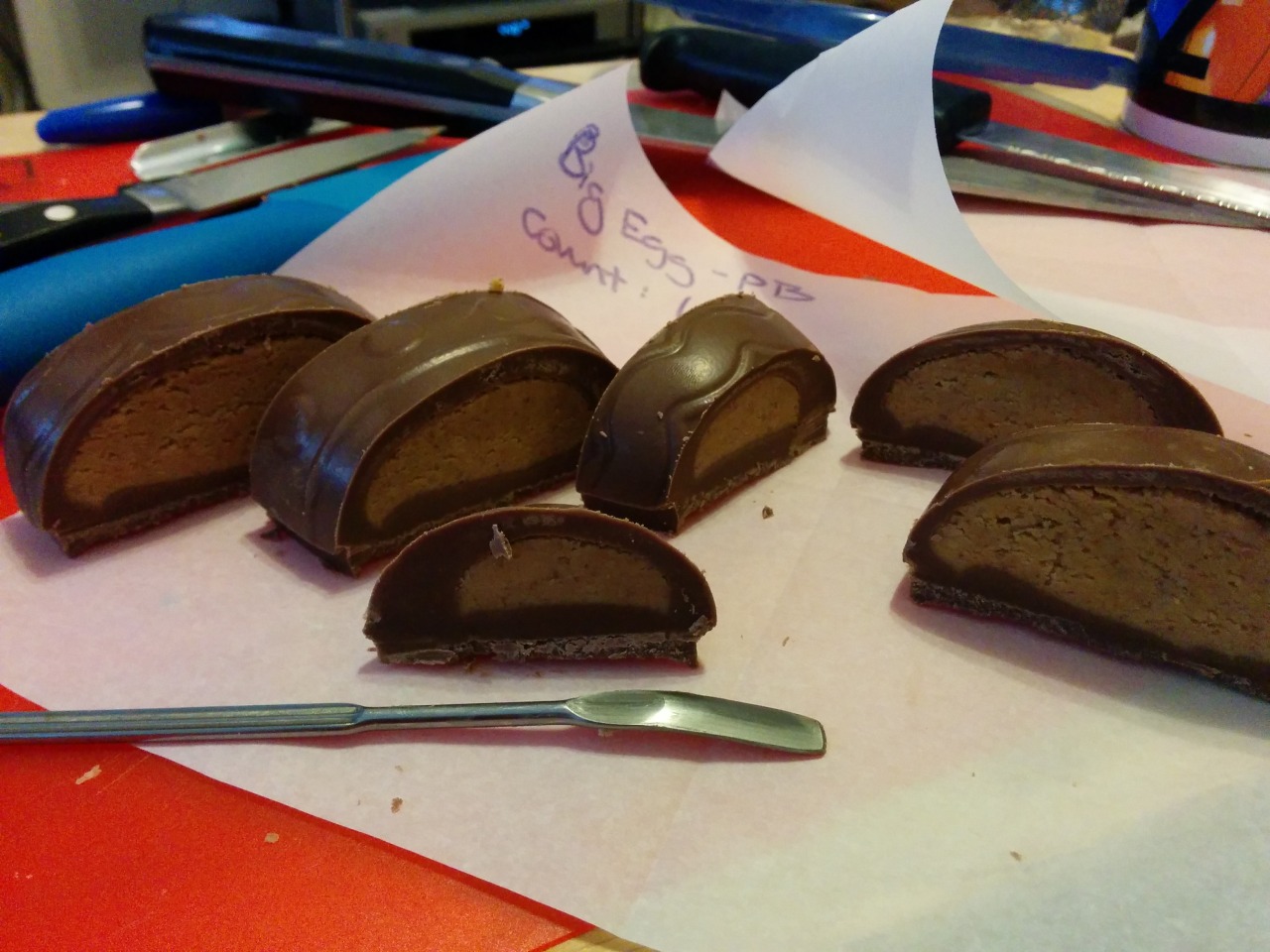
Admittedly, not exactly the C:PB ratio depicted on the box…

..but Good Guy Big Candy, thanks for not screwing us over on the peanut butter.

The Giant Peanut Butter Egg had 103 g of chocolate and 73g of peanut butter for a C:PB ratio of 1.41:1. It was also by and large the easiest to dissect and I appreciate that.
Item #4: Flat Mini Eggs
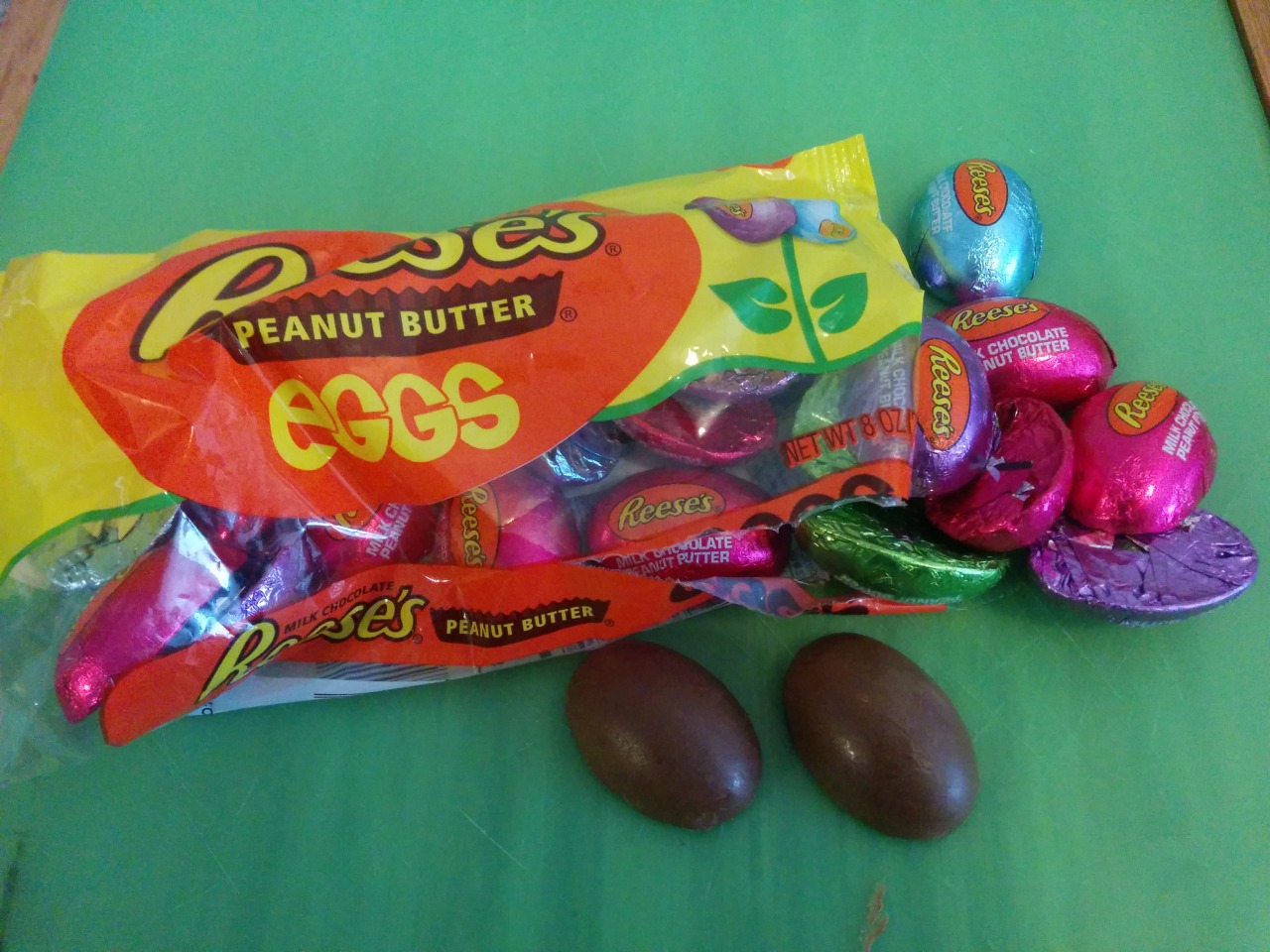
These things are bullshit. I mean just looking at them you would know there can’t possibly be any peanut butter in them. And you would be correct:
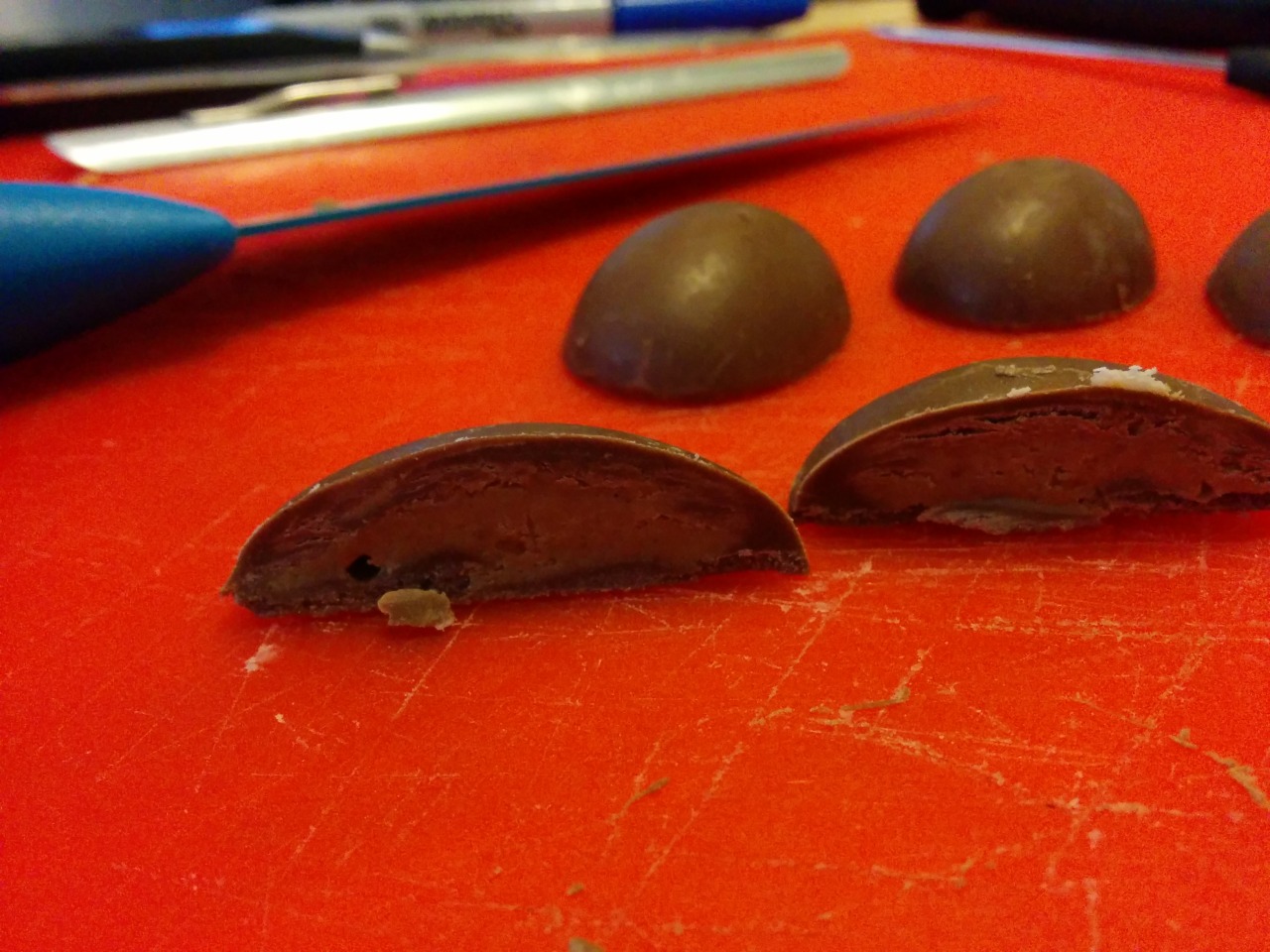
Eight of these POS petty excuses for Reese’s products afforded 58 g of chocolate and a mere 18g of peanut butter for a straight up appalling C:PB ratio of 3.22:1
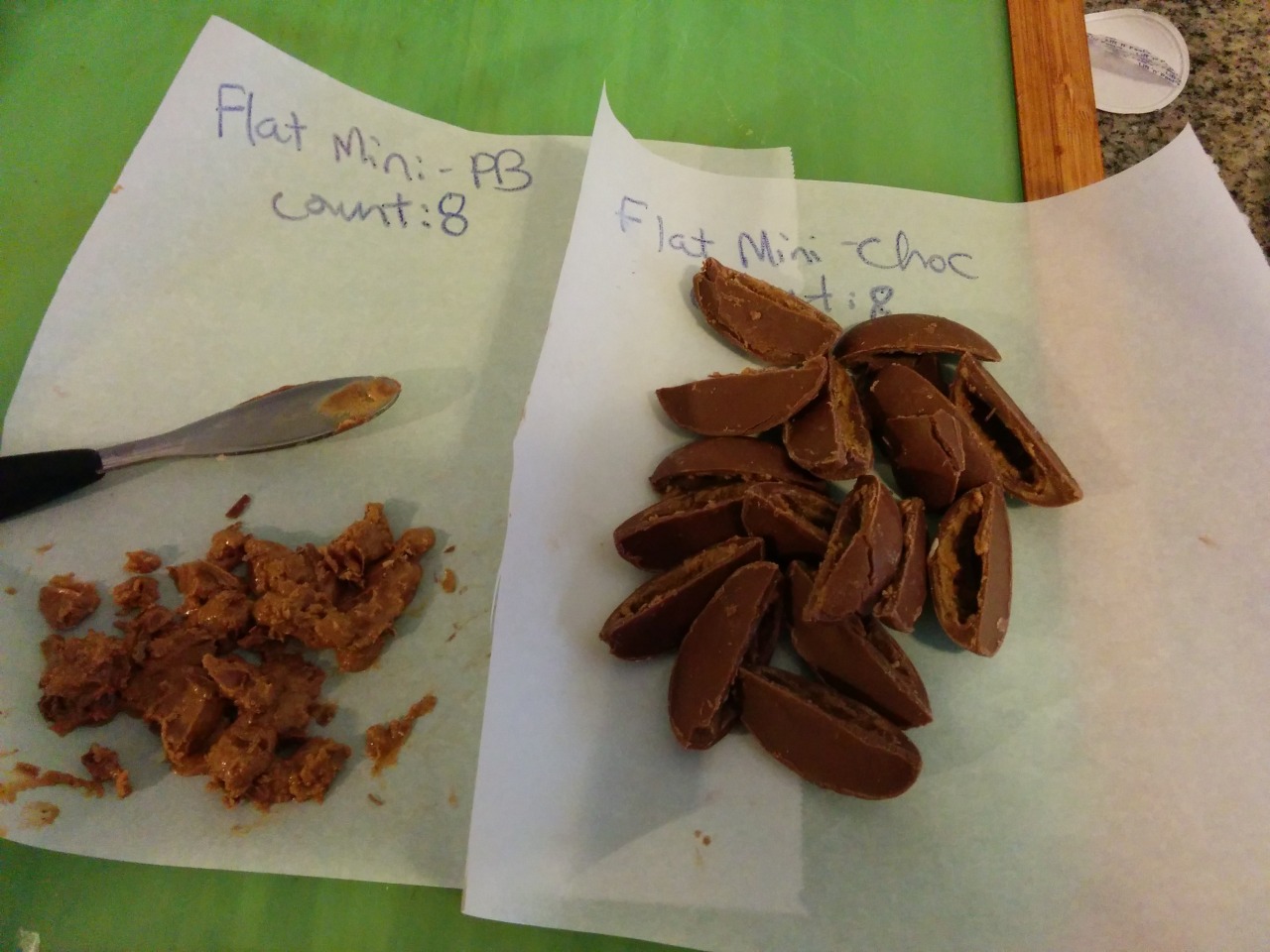
Item #5: Round Mini Eggs
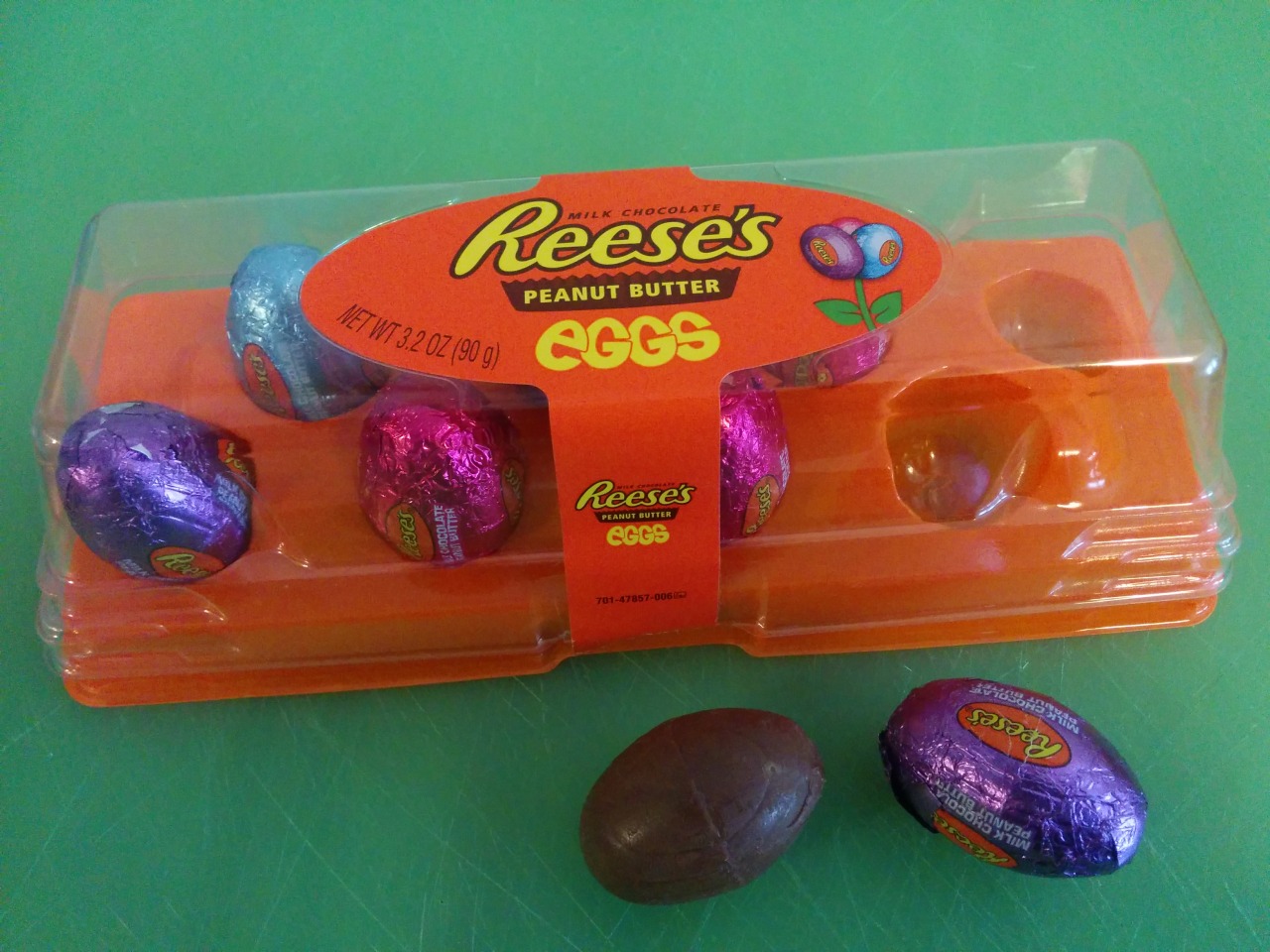
Wow! I literally have never seen these before. In real life they look nothing like what is depicted on the website, but I guess they are the same thing? Who knows. They are kind of like smaller versions of Cadbury eggs. They have little holes in them. They are weird. Let’s look inside:
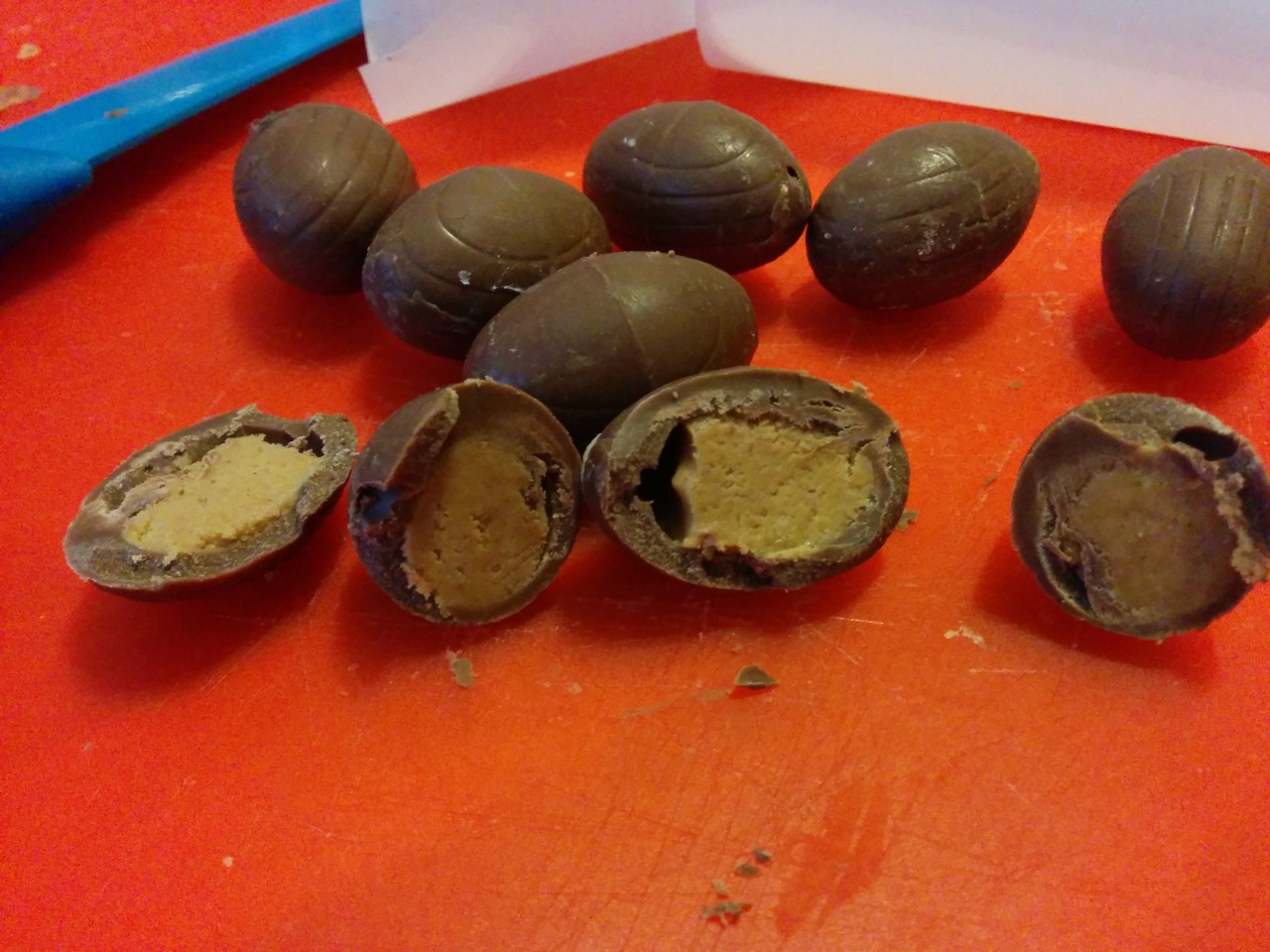
Eight of these bad boys gave 62 g of chocolate and 31 g of peanut butter, for a C:PB ratio of 2:1. I would be displeased about this but they get a pass for being cute and the only Reese’s Egg product that is actually shaped like an egg.
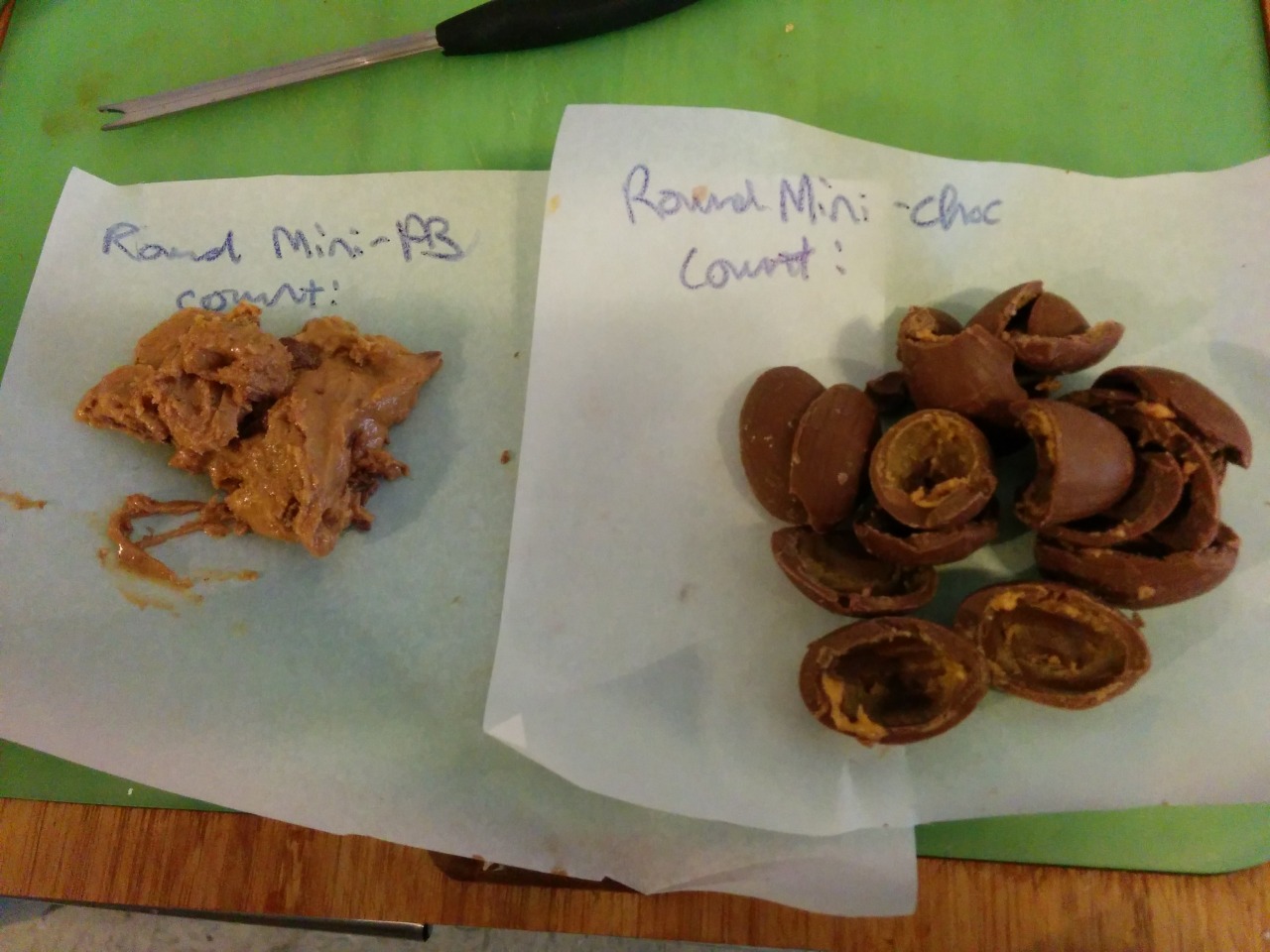
Item #6: White Chocolate Regular Eggs
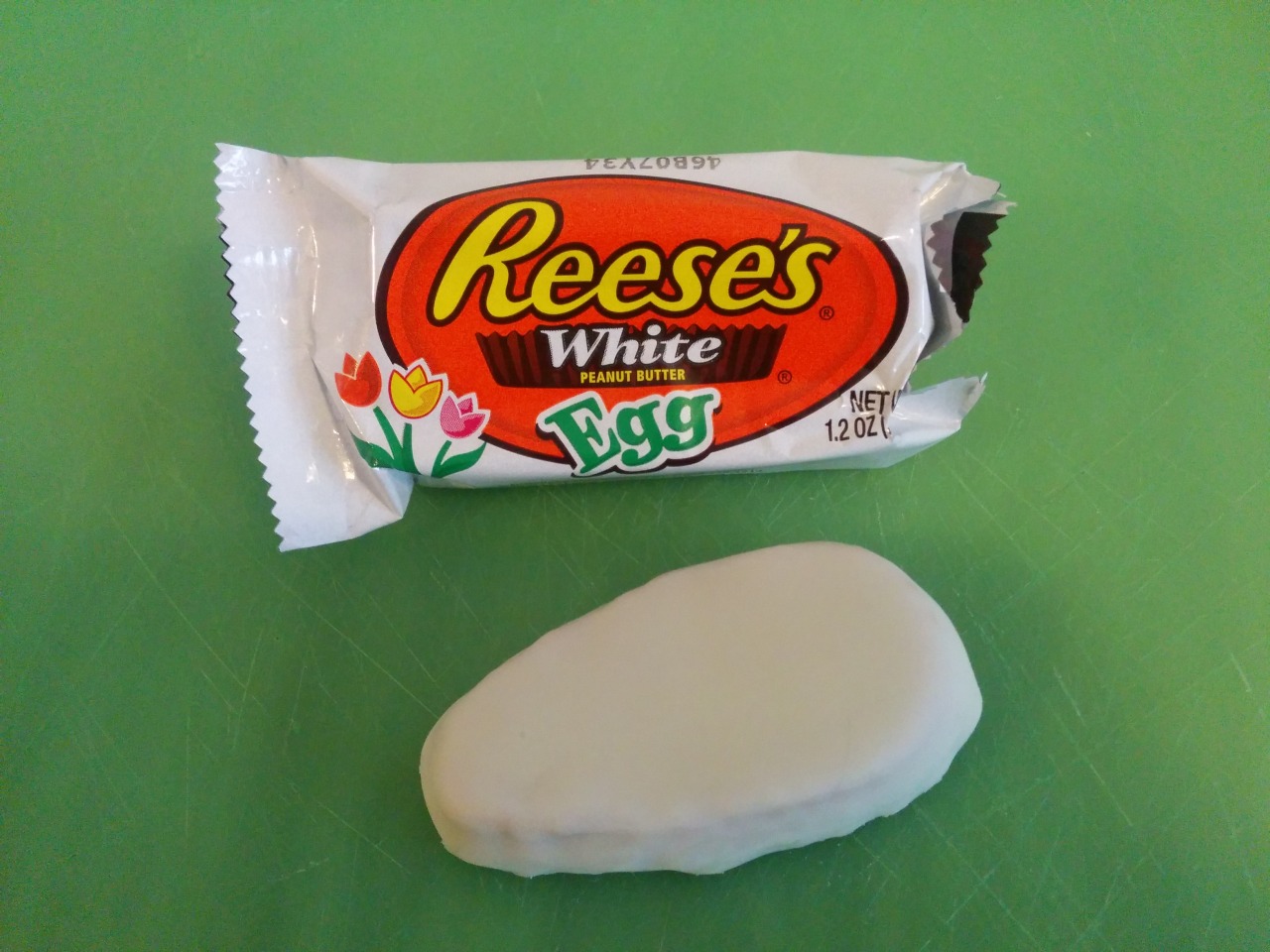
I’m really not into white chocolate, but if you are, well, whatever floats your boat. Here’s a cross section:
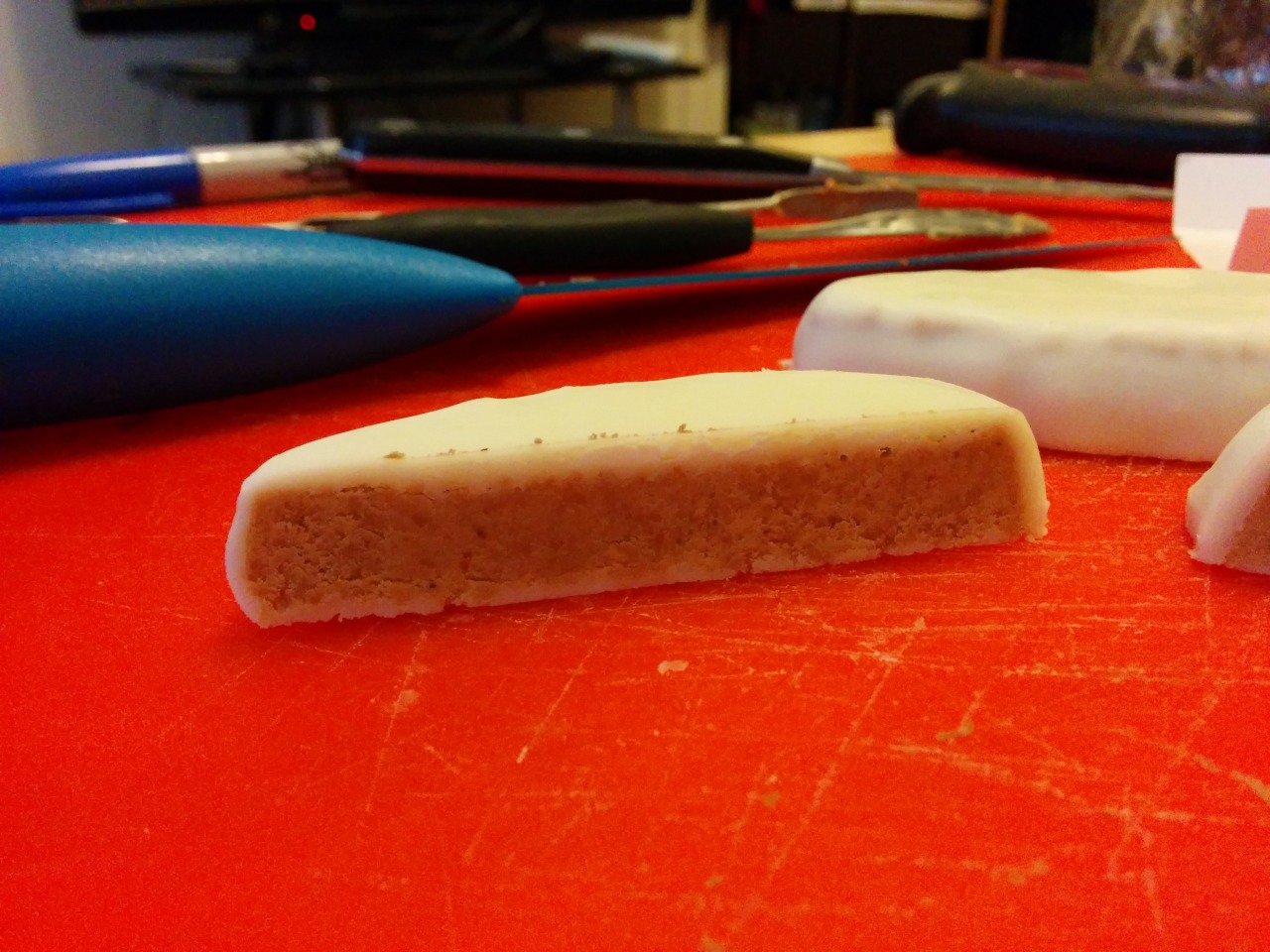
Two of these babies gave 35g of white chocolate and 44g of peanut butter. Wait what? Two White Chocolate Eggs have more peanut butter than two Regular Chocolate Eggs? Maybe? The batteries are dying on my kitchen scale. But yeah, that is what it seems.

The WC:PB ratio on these eggs is 0.8:1. According to my dying scale, these things are more peanut butter than chocolate. Amazing.
Item #7: White Chocolate Snack Sized Eggs

Let’s see if the trend holds up:
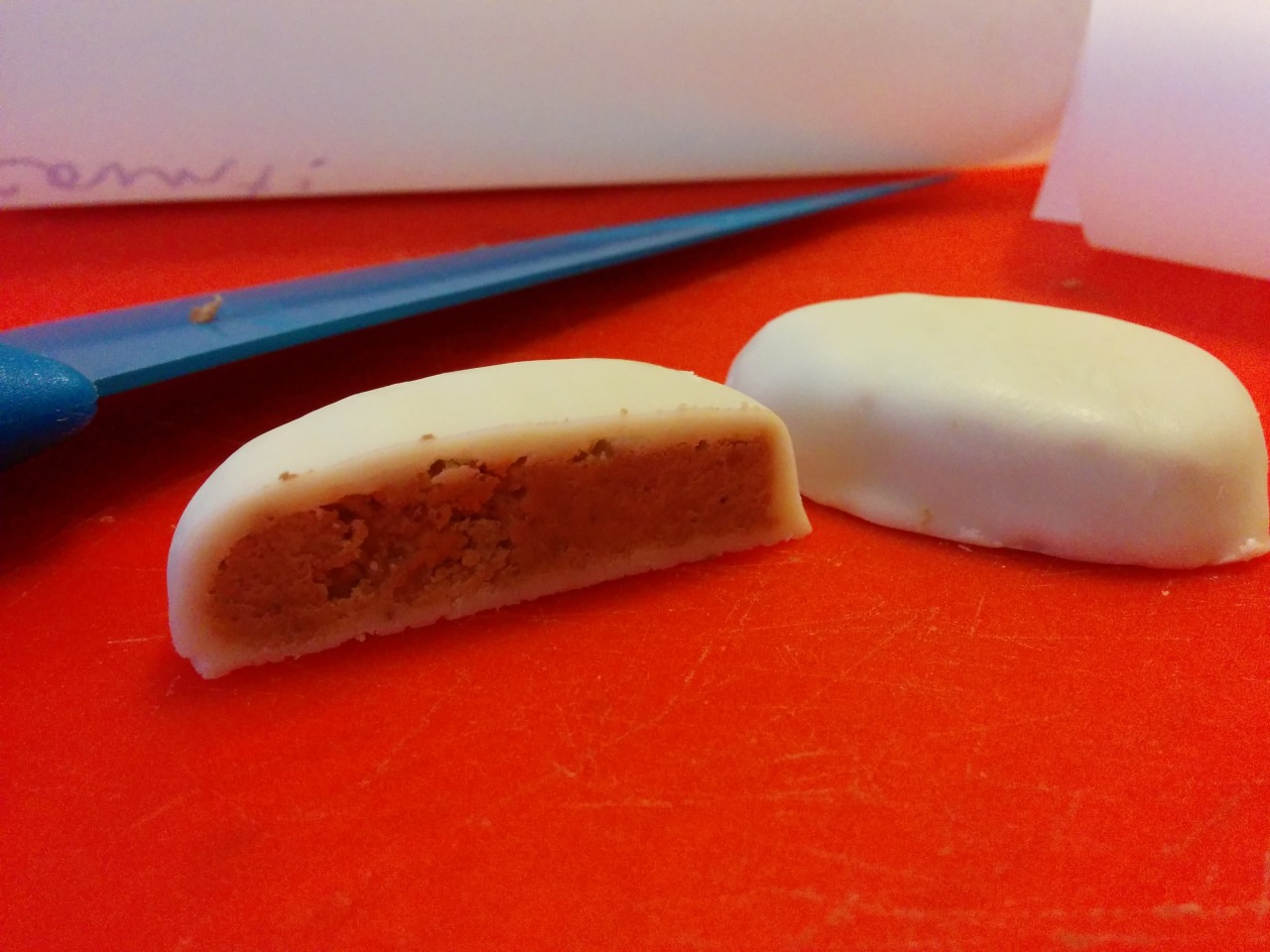
Two of these guys yielded 18 g of white chocolate, 18 g of peanut butter. WC:PB ratio is precisely 1:1. Astounding.
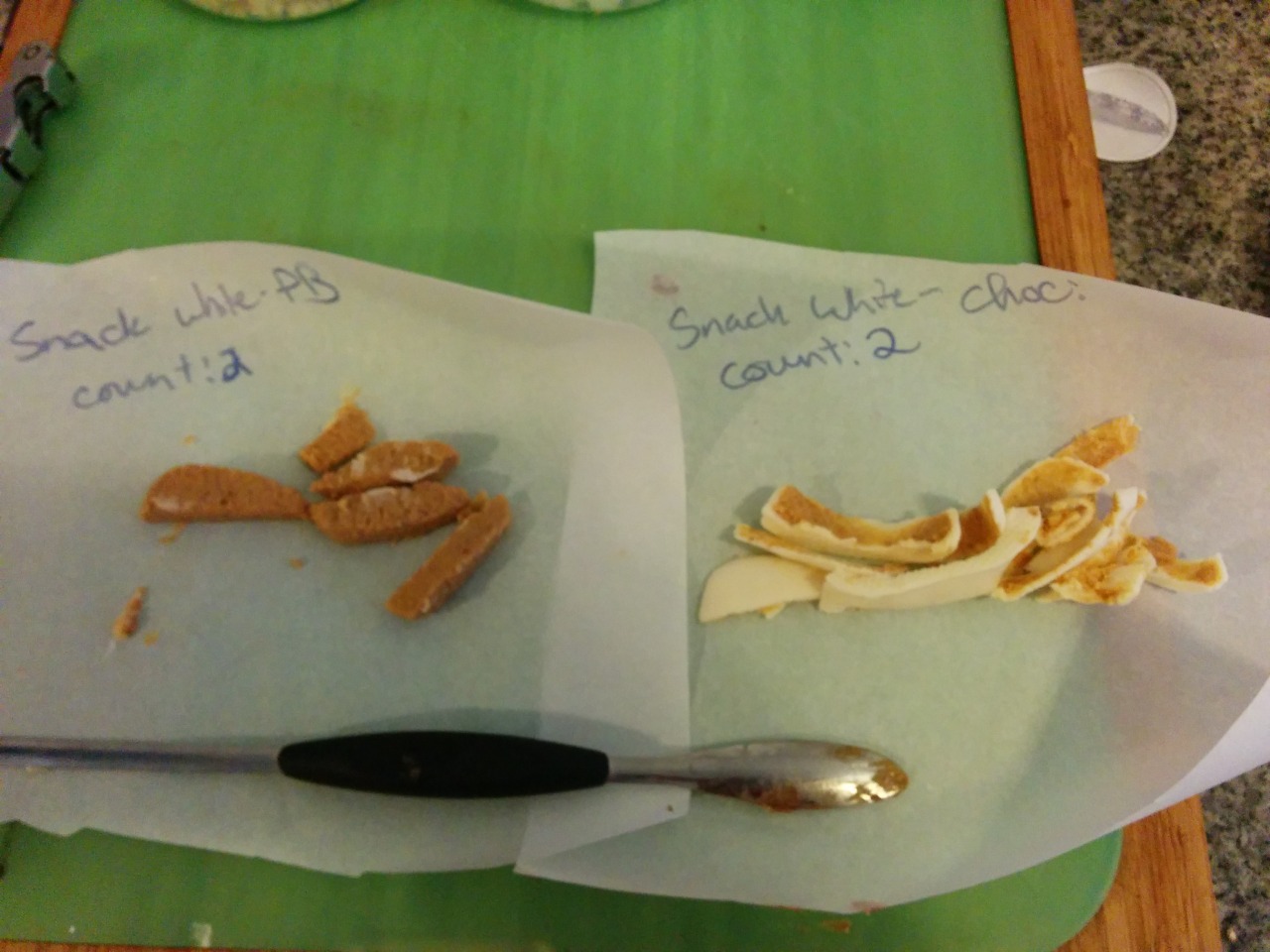
Now, if you are anything like me, you are saying: wait. Is there a difference in density between white chocolate and regular chocolate? Is that skewing the measurements? So I did what any normal person would do and melted each chocolate in the microwave and measured the volumes.
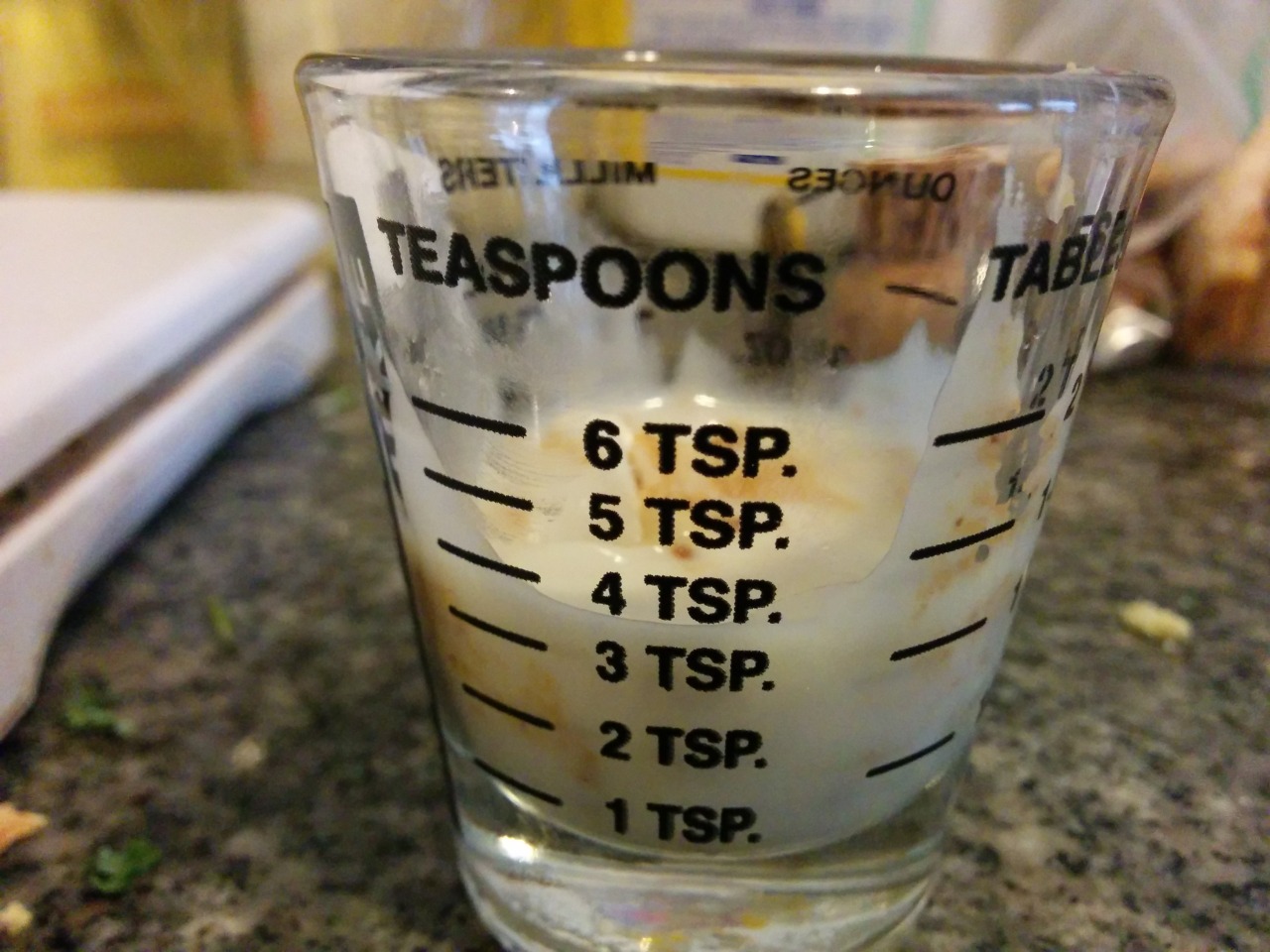
18 g of white chocolate melted to just under 4 tbsp

19 g of dark chocolate melted to just about 4 tbsp
I’m not a savage or anything so I’m not about to mix metric with English units here, but the math in my head says those densities are about the same.
Conclusion
So there you have it. Here are the final rankings, this time expressed in grams of peanut butter per gram of chocolate:
- Regular White Eggs: 1.25
- Snack White Eggs: 1.00
- Regular Eggs: 0.87
- Snack Eggs: 0.79
- Big Egg: 0.70
- Round Mini Eggs: 0.50
- Flat Mini Bullshit Eggs: 0.31
Now go forth and buy discounted candy armed with SCIENCE!
